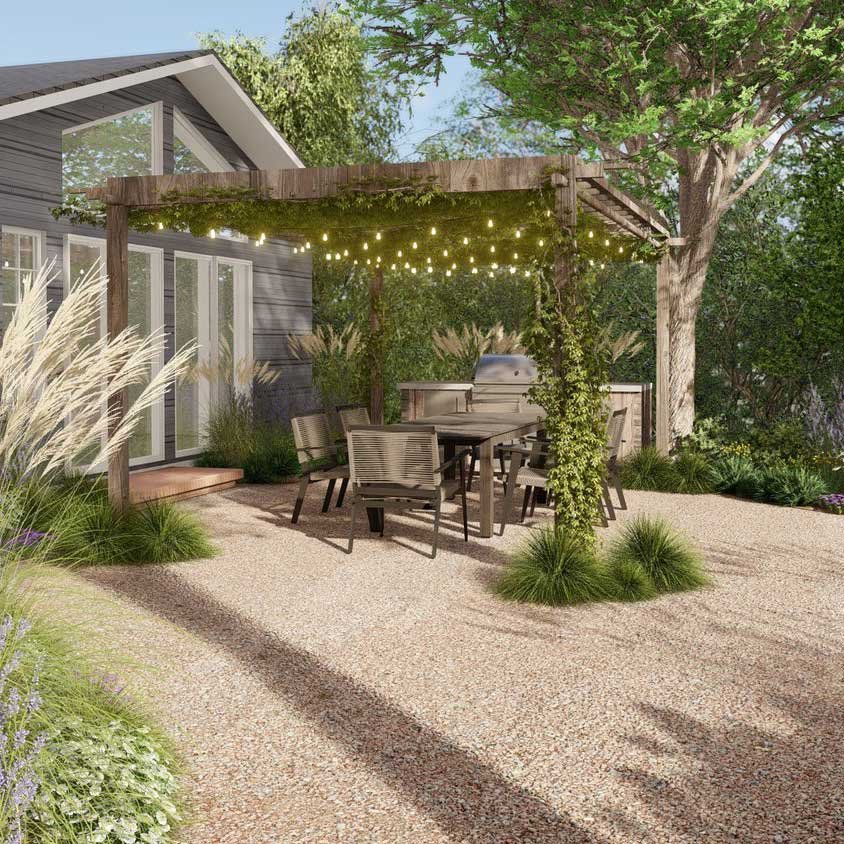The 7-Minute Rule for Landscapers
The 7-Minute Rule for Landscapers
Blog Article
Things about Landscapers
Table of ContentsThe Ultimate Guide To LandscapersGet This Report about LandscapersThe Best Guide To LandscapersThe smart Trick of Landscapers That Nobody is Talking AboutThe Only Guide for Landscapers
- A tree or bush (shrub) that sheds its fallen leaves in wintertime. In the PNW there are semi-deciduous or semi-evergreen plants that might shed their leaves relying on how cool the winter months is. Abelia and some hebe are fine examples. Landscapers. - A level event room, made from wood or composite product (made to resemble wood), commonly nearby or connected to a framework.

- Granite that is weathered to the factor that it is a very fine aggregate. This is an all-natural process, and the outcome can be utilized for courses and patio areas. Decomposed granite is typically described as DG. It is specifically beneficial in contemporary landscapes. - Trick landscape functions being suggested in a landscape style plan.
The 9-Second Trick For Landscapers
These objectives lead the design process, not the developer's style or choices. Usual design goals in Rose city are low upkeep, drought tolerant, and pet pleasant.
Over time this layer can get very thick and make it difficult for water, sun, and nutrients to get to portions of the lawn.- The procedure of accumulating and controlling the circulation of water on a home. This can be finished with grading, French drains, dry wells, permeable surfaces, sump pump, rain gardens, and much more.
- A sluggish feeding irrigation system that makes use of flexible tubes and emitters to send out an accurate quantity of water to each plant. - The capability of a plant to make it through without much summertime water.
- A yard feature where water is stood for by an aggregate rock product, normally a gravel or granite. These are most typically found in contemporary and Japanese garden layout.- A stone or natural flagstone outdoor patio, path, or walkway constructed without a concrete base. The base would certainly be compacted gravel and the joints would certainly be an accumulation or walkable ground cover.
The Facts About Landscapers Uncovered
- A rock preserving or cost-free standing wall developed without the use of mortar. - An underground framework that collect water and allows it to reduce percolate right into the dirt around it.
Landscape style that works with a websites' setting in both appearance and sustainability without negative impacts to the atmosphere. Edging in the landscape is a line of separation that develops visual passion in the garden by separating one segment from one more segment. This can be visual or practical, keeping one aspect (such as pea crushed rock) from obtaining mixed right into another (like bark dust).
Locations try these out can likewise have a sensation of "enclosure" given by trees, various other growings, fences, or screens. The landscape near the access to a building.
A plant that is foreign to the location where it will certainly be planted. Not all "exotics" are invasive or damaging, and several can be well acted or drought tolerant (Landscapers). A mass growing of brushes. Thicker bladed turf grass that spread using rhizomes.: The degree of soil on your residential property before bark dirt or garden compost is spread out.
Facts About Landscapers Uncovered

The function, factor, click this or activity that a location is be landscaped for. Area for expanding plants for viewing, consuming, or physical activity.
Rock item, either rounded or fractured, that is fairly small- typically 1" or much less. Low plants that are enabled or encouraged to spread out over an area. Can describe any kind of "difficult" garden elements including statuary or stones however a lot of frequently is utilized to describe courses, outdoor patios, and walls.: Height distinction between the degree of water in a fish pond (or the level of the pump if it rests outside the fish pond) and the top electrical outlet of water which influences efficiency of the water pump in gph (gallons per hour). Thick shrubs or trees that create a fencing, screen, or boundary.

See This Report on Landscapers
Conventional PNW landscapes are casual. A plant that spreads out more than desired, or into habitats where it does damage.
Can include head positionings and protection, pipe sizing, GPM specifications, and materials needed to mount this system. Accredited specialist who develops landscapes, educated in design and architecture as well as in cultivation.
Landscape developers normally have less education than Landscape Architects and are not accredited. A completed landscape design, outlining all components for the brand-new landscape.
Calcium material used to increase the pH in soil, which will make it less friendly to moss. A water limited HDPE material made use of below ponds, these details streams and waterfalls in water attributes. Making use of many growings of the same range to fill in a location in the landscape. This can reduce maintenance and water usage in the garden.
Report this page